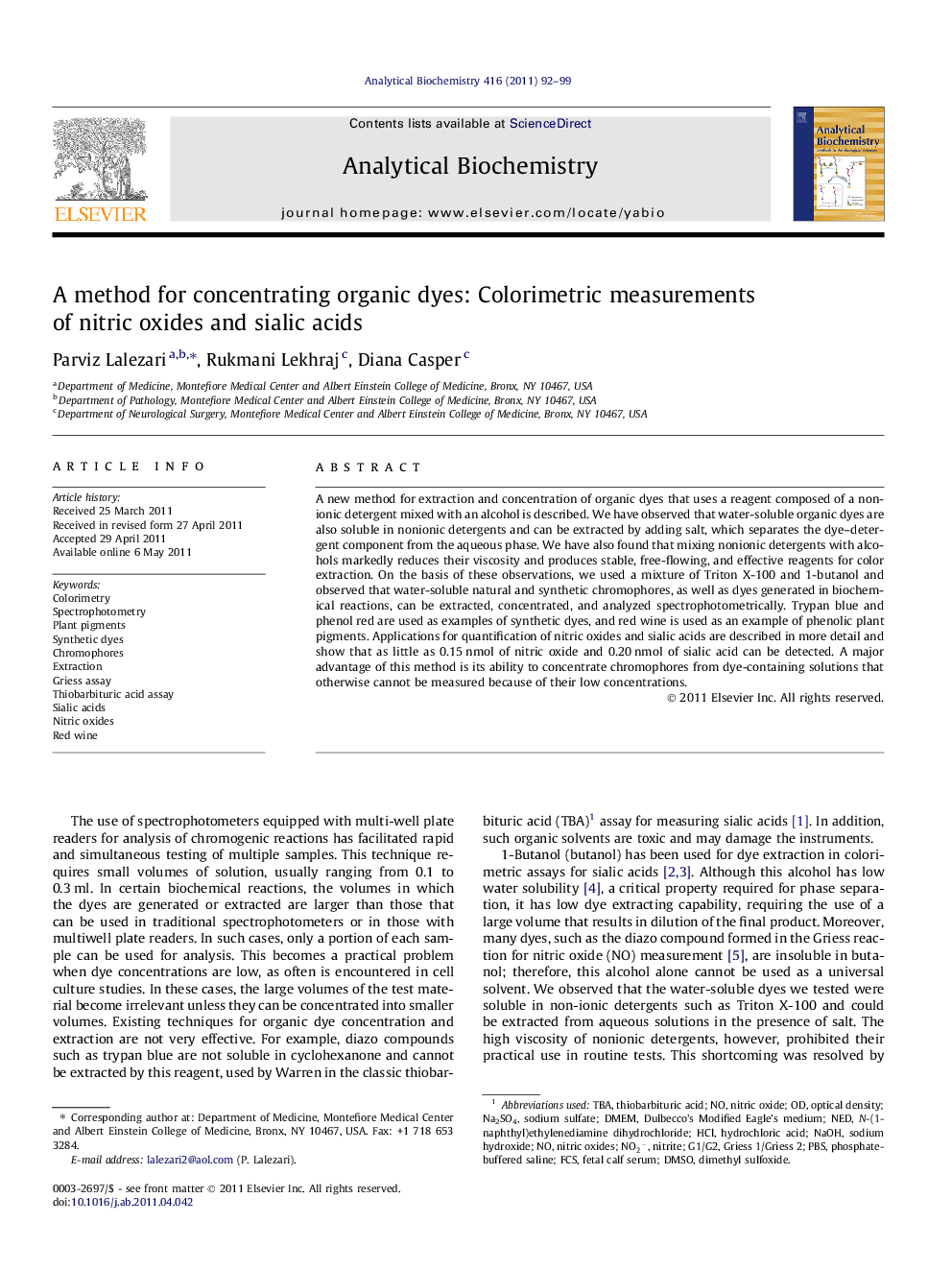| Article ID | Journal | Published Year | Pages | File Type |
|---|---|---|---|---|
| 1174087 | Analytical Biochemistry | 2011 | 8 Pages |
A new method for extraction and concentration of organic dyes that uses a reagent composed of a nonionic detergent mixed with an alcohol is described. We have observed that water-soluble organic dyes are also soluble in nonionic detergents and can be extracted by adding salt, which separates the dye–detergent component from the aqueous phase. We have also found that mixing nonionic detergents with alcohols markedly reduces their viscosity and produces stable, free-flowing, and effective reagents for color extraction. On the basis of these observations, we used a mixture of Triton X-100 and 1-butanol and observed that water-soluble natural and synthetic chromophores, as well as dyes generated in biochemical reactions, can be extracted, concentrated, and analyzed spectrophotometrically. Trypan blue and phenol red are used as examples of synthetic dyes, and red wine is used as an example of phenolic plant pigments. Applications for quantification of nitric oxides and sialic acids are described in more detail and show that as little as 0.15 nmol of nitric oxide and 0.20 nmol of sialic acid can be detected. A major advantage of this method is its ability to concentrate chromophores from dye-containing solutions that otherwise cannot be measured because of their low concentrations.
